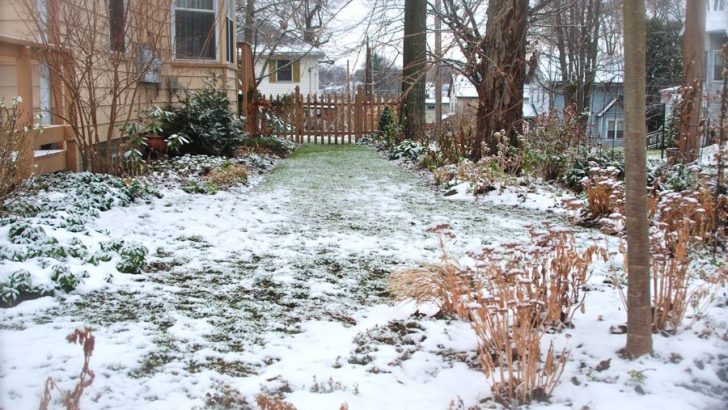Green Fingers
“Every gardener knows that under the cloak of winter lies a miracle…a seed waiting to sprout, a bulb opening to the light, a bud straining to unfurl. And the anticipation nurtures your dream” – Barbara Winkler.
Prune Buddleja and Elder right down to old wood to keep it to a manageable size and also to keep it flowering on new growth where you can see it and enjoy it. After flowering, prune winter-flowering shrubs such as mahonia, winter-flowering jasmine and winter-flowering heathers.
When pruning heathers, just remove the shoot tips with garden shears, don’t cut into old wood as it won’t rejuvenate. Also using sheers, cut all of last years’ leaves from Epimediums before spring flowers develop. This not only allows light in for new growth but lets you enjoy the flowers unobstructed. Cut down ornamental grasses left standing before fresh shoots appear.
Clear soggy, collapsed stems from perennials and compost them. Remove and compost debris from shed guttering so rain water can fill your water butt. After snow falls, clear it from on top of hedges, conifers and evergreen shrubs to prevent it from weighing down and breaking branches.
Infestations
Check anything you have planted in the last season or two. It may have been slightly lifted by frost or windrock, if so firm them back down.
Hang fat balls in holders on or very close to roses or any plant susceptible to greenfly infestations. This is to encourage blue tits to forage for overwintering pests.
Plant Lily of the Valley crowns. They want partial shade, in a moisture-retentive but not wet soil that has been enriched with homemade garden compost. To increase your stock or just to prevent overcrowding, lift and divide snowdrops and winter Aconites. Do this after they have finished flowering but while they are still in the green. Dig the holes where you wish to replant them before you dig them up and replant them immediately. Don’t let them dry out between plantings.
Prune late-summer flowering clematis, cutting back stems to healthy buds about 30cm/1 foot from the base. Some types of clematis can be pruned now and some at other times. The best way to tell when to prune clematis or any other plant is to look at the label that comes with a new plant.
The plant’s name, pruning, planting instructions, what type of soil and aspect it prefers and some basic instructions on how to care for your plant are on the label. If you leave the label on the plant, it will last for a few years outside and then it is gone. It’s best if you remove it and store it inside away from the elements. Then you will always have it and the invaluable information that it contains.


 Paul Gargan
Paul Gargan
